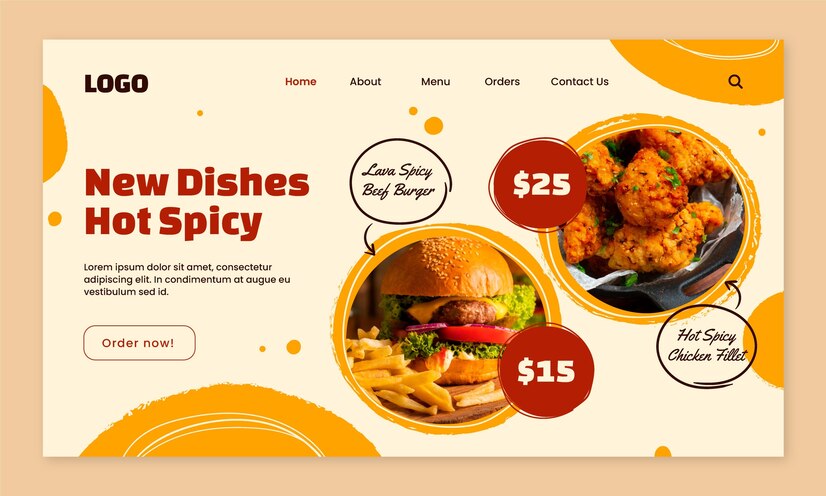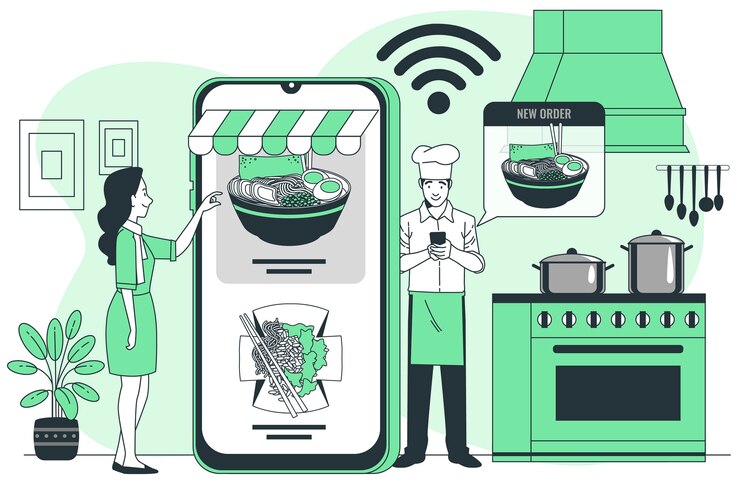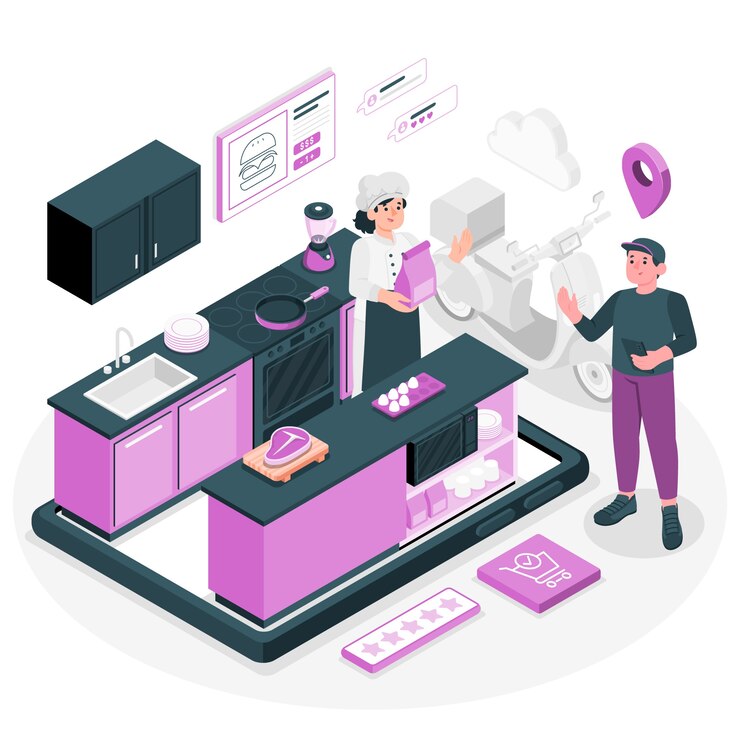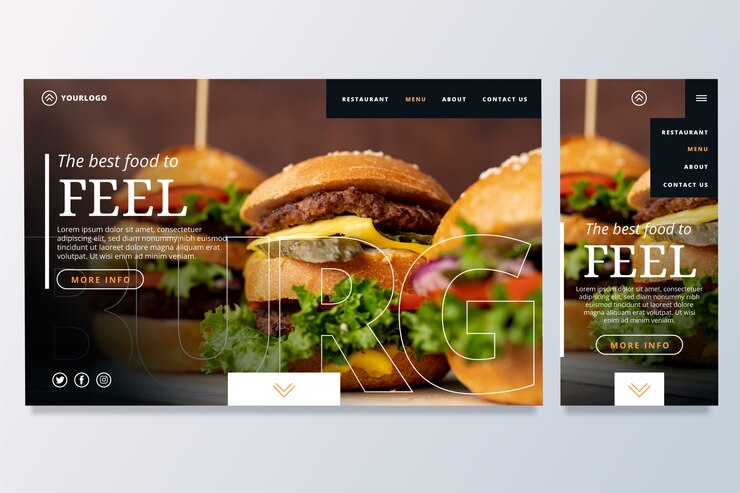- Streamlined Order Management
An integrated Restaurant Management System automates order processing, reducing manual input and ensuring faster, error-free order handling, which saves valuable time for your team. - Real-Time Inventory Tracking
Restaurant Management System Automated inventory management within your Restaurant Management System updates stock levels in real-time, preventing shortages and overstock, and reducing the need for manual stock checks. - Centralized Data Access
All data (orders, inventory, customer preferences) is stored in a single Restaurant Management System, allowing easy access and reducing the time spent searching across multiple platforms. - Automated Financial Reports
The restaurant management system generates real-time financial reports, reducing manual calculations and providing immediate insights into your restaurant’s financial health, saving time and ensuring accuracy. - Improved Employee Management
Restaurant Management System Scheduling, attendance, and payroll are managed within the Restaurant Management System, eliminating administrative tasks and ensuring smooth operations, thus improving time management and efficiency. - Efficient Communication Across Departments
Restaurant Management System ntegrating front-of-house and back-of-house operations in your Restaurant Management System enhances communication, reducing delays and errors in fulfilling orders. - Faster Customer Service
With the restaurant management system, staff can access customer preferences, order histories, and special requests instantly, ensuring quicker and more personalized service. - Accurate Sales Forecasting
The integration within the restaurant management system provides insights into sales patterns and trends, enabling better forecasting, ordering, and planning, which ultimately helps in time management. - Seamless Delivery and Takeout Orders
Integration with delivery platforms within your restaurant management system ensures that orders are processed without delays, tracking orders in real-time for timely deliveries. - Improved Decision-Making
Data-driven insights from your restaurant management system support better decision-making, improving both operational and strategic planning, which ultimately saves time and optimizes restaurant performance. - Enhanced Reporting and Analytics
Automated reporting in the restaurant management system saves time on manual data entry and provides comprehensive analytics to help with business planning and optimization. - Reduced Human Error
By automating key processes within your restaurant management system, you minimize human errors, which in turn saves time spent correcting mistakes and enhances overall operational efficiency. - Optimized Marketing Efforts
With customer data integrated into the restaurant management system, targeted marketing campaigns can be automated, saving time and improving marketing efficiency. - Integrated POS Software
Integration with POS software in Kolkata ensures seamless order taking and processing, reducing wait times and enhancing the overall dining experience for customers, saving both time and resources. - Inventory and Order Integration
POS software in Kolkata integrated with your restaurant management system automatically updates inventory, reducing the manual effort required for inventory tracking and order management. - Time-Saving Payment Processing
The restaurant management system integrates with your payment gateway, speeding up the payment process and reducing the time customers spend waiting to complete their transactions. - Real-Time Notifications and Alerts
Your restaurant management system can provide real-time alerts for low stock, order updates, and employee tasks, ensuring that your team stays on top of important tasks, saving time and reducing confusion. - Optimized Workflow for Kitchen Staff
With integrated restaurant management system solutions, your kitchen staff receives accurate order details instantly, allowing them to focus on food preparation without delays. - Order Customization and Special Requests
An integrated restaurant management system ensures that special customer requests and order customizations are handled efficiently, improving service speed and customer satisfaction. - Order Tracking for Customers
Customers can track their orders in real-time with an integrated restaurant management system, reducing the need for staff involvement in answering order status inquiries, saving time and increasing efficiency. - Optimized Table Management
Your restaurant management system helps optimize table assignments, reducing customer wait times and improving seating efficiency, saving time for both customers and staff. - Centralized Customer Database
A centralized customer database within your restaurant management system ensures you can quickly access customer preferences and previous order history, streamlining the ordering process and saving valuable time. - Efficient Waitlist Management
The restaurant management system manages your waitlist efficiently, ensuring that guests are seated promptly without long delays, saving time and improving customer satisfaction. - Streamlined Loyalty Programs
Integrated loyalty programs within your restaurant management system help automate rewards, track points, and offer discounts to returning customers, saving time and encouraging repeat business. - Cross-Department Coordination
An integrated restaurant management system ensures smooth coordination between the kitchen, waitstaff, and management, minimizing errors and delays, thus saving time and improving overall service efficiency. - Data-Driven Decisions for Staff Optimization
The restaurant management system offers valuable data on staffing levels and peak business hours, allowing you to schedule staff more effectively and ensure optimal labor use, saving time and resources.

How to Improve Efficiency with an Integrated Restaurant Management System


By using a comprehensive restaurant management system, integrated with POS Software in Kolkata and other operational tools, you save time, improve efficiency, and streamline every aspect of Restaurant Management System your restaurant’s operations, ensuring a smoother experience for both staff and customers
A Restaurant Management System (RMS) is a comprehensive software solution designed to simplify and optimize various operational aspects of running a restaurant. From order processing and billing to inventory tracking and customer feedback, an RMS brings together all essential functions under one platform.
Many advanced systems also include integration with Point of Sale (POS) software, enabling seamless order and payment processing at the table or counter.

Key Features of a Restaurant Management System
A powerful Restaurant Management System typically includes the following essential features:
- Point of Sale (POS) Integration: Fast and accurate order processing with table-side payments
- Inventory Management: Real-time tracking of stock levels and automated alerts for low inventory
- Customer Relationship Management (CRM): Tracking customer preferences and loyalty programs
- Billing and Payment Processing: Support for multiple payment methods, including digital wallets
- Staff Management: Efficient scheduling, payroll, and time tracking for employees
- Analytics and Reporting: Data-driven insights to improve sales and operational efficiency
These features work together to help restaurant owners save time, cut costs, and provide superior customer service.
Benefits of Using a Restaurant Management System
1. Time-Saving Automation
One of the primary advantages of using a Restaurant Management System is the significant time saved through automation. Tasks like order processing, bill generation, and stock tracking are streamlined, freeing up managers to focus on more critical aspects of the business, such as enhancing the dining experience.
2. Enhanced Operational Efficiency
By integrating POS software and other tools, the system ensures smooth communication between the kitchen, service staff, and billing department. This reduces delays, minimizes errors, and speeds up service delivery.
3. Better Inventory Management
Real-time inventory tracking ensures you never run out of key ingredients unexpectedly. The system can generate alerts when stock is running low, helping you maintain consistent service quality.
4. Improved Customer Experience
With features like table-side ordering and personalized service through CRM, customers enjoy a seamless and pleasant dining experience. Loyalty programs and targeted promotions also help retain regular customers.
5. Accurate Reporting and Analytics
Data-driven insights allow you to make informed decisions about menu changes, pricing strategies, and marketing campaigns. Detailed reports help identify trends, spot inefficiencies, and improve profitability.
How to Choose the Right Restaurant Management System
When selecting a Restaurant Management System, keep the following factors in mind:
- Ease of Use: Choose a system that is intuitive and easy for staff to learn and operate.
- Integration Capabilities: Ensure the system can integrate with your existing POS software and other tools.
- Scalability: Opt for a solution that can grow with your business as you expand.
- Customization: Look for systems that allow customization to fit your restaurant’s specific needs.
- Support and Training: Reliable customer support and training options are essential for a smooth implementation.
Investing in the right system ensures you gain maximum benefits from automation and efficiency improvements.
Steps to Implement a Restaurant Management System Successfully
1. Define Your Goals and Needs
Identify the specific pain points you want to address, such as faster billing, better inventory tracking, or improved customer engagement.
2. Train Your Staff
Ensure all team members are well-trained to use the system effectively. This reduces errors and boosts productivity.
3. Gradual Rollout
Introduce the system in phases to ensure a smooth transition without disrupting operations.
4. Monitor Performance
Continuously track performance metrics and gather feedback from staff and customers to make improvements.
Future of Restaurant Management Systems
The restaurant industry is constantly evolving, with technological advancements driving new trends. Future-ready Restaurant Management Systems may incorporate features such as:
- AI-Driven Insights: Predictive analytics for better decision-making
- Contactless Ordering and Payment: Enhancing convenience and safety
- Mobile Solutions: Empowering staff with mobile apps for faster service
By adopting advanced solutions, restaurant owners can stay competitive and meet changing customer expectations.
A Restaurant Management System is no longer a luxury but a necessity for businesses that want to thrive in a competitive market. By integrating essential functions into a single platform, these systems save time, improve efficiency, and provide a better experience for both staff and customers.
If you’re looking to streamline operations, increase profitability, and provide exceptional service, investing in a robust Restaurant Management System is a step in the right direction.
